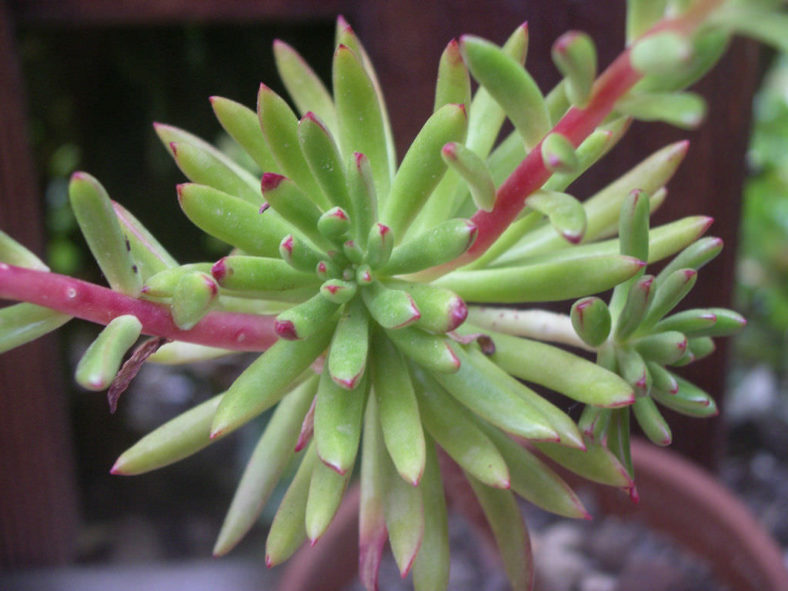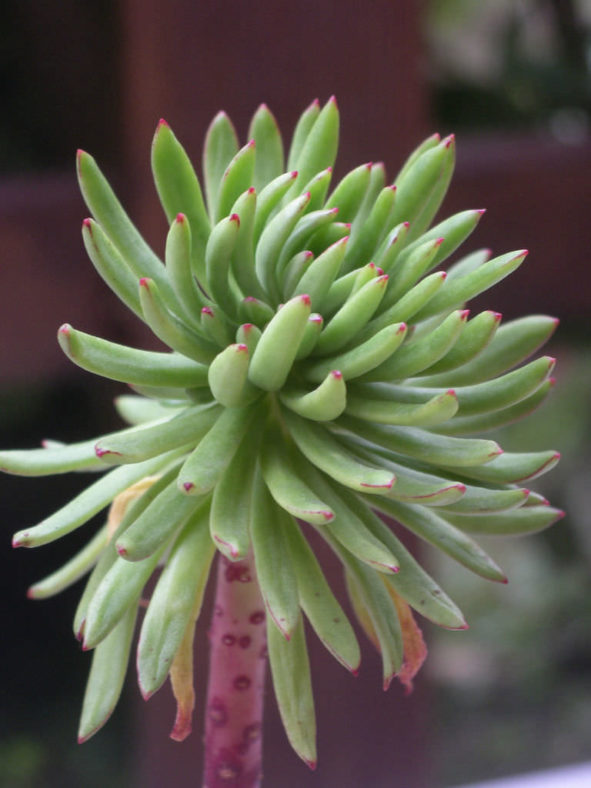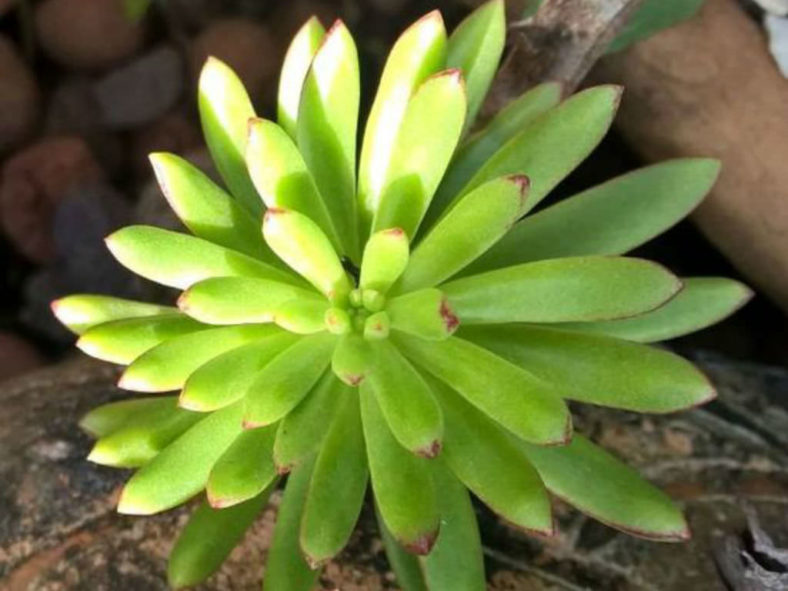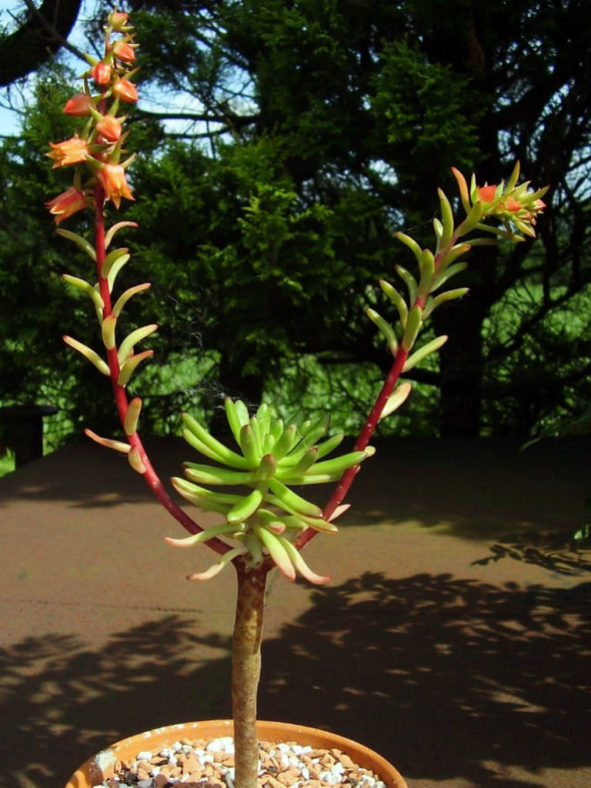Scientific Name
Echeveria johnsonii E.Walther
Scientific Classification
Family: Crassulaceae
Subfamily: Sempervivoideae
Tribe: Sedeae
Genus: Echeveria
Etymology
The specific epithet "johnsonii" (pronounced "jon-so-nee-eye") honors Joseph Harry Johnson (1894-1987), an American botanist and explorer, though erroneously, as he did not introduce this species to cultivation; it was actually his namesake, Howard Johnson, who did.
Origin
Echeveria johnsonii is native to Ecuador.
Description
Echeveria johnsonii is a succulent plant with an erect to somewhat decumbent, usually branched stem with green leaves with faint lines of purple at the edges near the tips. It can grow up to 4 inches (10 cm) tall, sometimes more. The leaves are crowded along the upper end of branches and can measure up to 1.4 inches (3.5 cm) in length and 0.4 inches (1 cm) in width.
The flowers are bell-shaped, reddish-orange, and light orange inside. They appear on erect or ascending stalks that arise below the leaves. The flower stalks can grow up to 4 inches (10 cm) long.

How to Grow and Care for Echeveria johnsonii
Hardiness: USDA hardiness zones 9a to 11b: from 20°F (-6.7°C) to 50°F (10°C).
Most common Echeveria species are not complicated succulents to grow, provided you follow a few basic rules. First, be careful never to let water sit in the rosette, as it can cause rot or fungal diseases that will kill the plant. Additionally, remove dead leaves from the bottom of the plant as it grows. These dead leaves provide a haven for pests, and Echeverias are susceptible to mealybugs. Finally, as with all succulents, careful watering habits and plenty of light will help ensure success.
Repot as needed, preferably during the warm season. To repot a succulent, ensure the soil is dry before repotting, then gently remove the pot. Knock away the old soil from the roots, removing any rotted or dead roots. Treat any cuts with a fungicide.
Most Echeverias can be easily propagated from leaf cuttings, although some are better propagated from seeds or stem cuttings. To propagate a leaf cutting, place the individual leaf in potting soil for succulents and cover the dish until the new plant sprouts.
Learn more at How to Grow and Care for Echeveria.
Links
- Back to genus Echeveria
- Succupedia: Browse succulents by Scientific Name, Common Name, Genus, Family, USDA Hardiness Zone, Origin, or cacti by Genus
Photo Gallery


